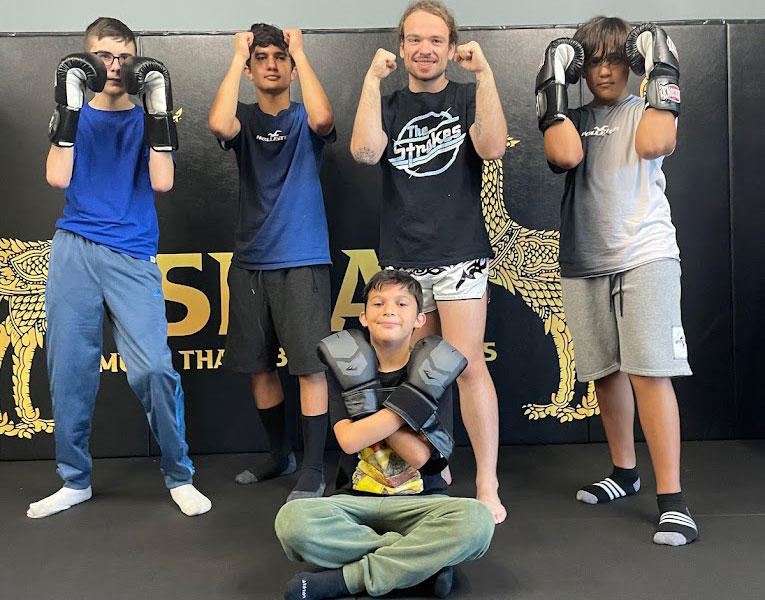Muay Thai, often called the “Art of Eight Limbs,” has gained global recognition for its powerful and dynamic fighting style. But amidst its popularity, a common question arises: Is Muay Thai truly a martial art? In this comprehensive exploration, we will delve into the roots, philosophy, and unique characteristics of Muay Thai to unravel the essence that solidifies its place as a true martial art masterpiece.
Understanding the Foundations of Muay Thai
Historical Roots:
Muay Thai traces its origins to ancient Thailand, where it evolved from military training to a cultural and sporting phenomenon. The art’s roots are deeply embedded in the nation’s history, dating back centuries. Initially developed for self-defense in times of war, Muay Thai’s transformation into a sport and martial art reflects its adaptability and enduring legacy.
Philosophical Principles:
Like other martial arts, Muay Thai is guided by philosophical principles beyond physical techniques. It emphasizes discipline, respect, and self-control, fostering a holistic approach to personal development. Practitioners are encouraged to embody the values of honor and humility both inside and outside the training camp or ring.
The Artistic Elements of Muay Thai
Unique Fighting Style:
Muay Thai distinguishes itself through its unique fighting style that utilizes eight points of contact – fists, elbows, knees, and shins. This comprehensive approach to striking sets Muay Thai apart from many other martial arts, showcasing a fluidity and versatility that makes it both compelling and captivating.
Cultural Significance:
Beyond its technical aspects, Muay Thai is deeply intertwined with Thai culture. Traditional music, rituals, and ceremonies are integral to Muay Thai events, contributing to the art’s cultural richness. This cultural significance adds an artistic layer to the practice of Muay Thai, elevating it beyond mere physical discipline.
Key Elements of Muay Thai Training
Physical Conditioning:
Muay Thai places a significant emphasis on physical conditioning. Training sessions include cardiovascular workouts, strength training, and flexibility exercises. This comprehensive approach enhances a practitioner’s fighting abilities and contributes to overall health and fitness.
Technique and Strategy:
Mastery of Muay Thai involves honing various techniques, from basic strikes to intricate clinch work. Training sessions focus on refining these techniques and developing effective strategies for both offense and defense. The art’s complexity requires a deep understanding of timing, distance, and movement.
Mental Toughness:
Muay Thai is as much a mental challenge as it is physical. Through rigorous training and sparring, practitioners cultivate mental toughness, focus, and resilience. Staying composed under pressure is a hallmark of a skilled Muay Thai fighter.
Muay Thai in the Modern Era
Global Popularity:
In recent decades, Muay Thai has transcended its cultural boundaries and gained immense popularity worldwide. Its widespread recognition as a competitive sport and practical martial art has led to the establishment of Muay Thai gyms and training camps across the globe.
Competitive Scene:
Muay Thai boasts a thriving competitive scene with professional fighters showcasing their skills in global arenas. International competitions and championships attract top talent, further solidifying Muay Thai’s status as a respected martial art.
Influence on Mixed Martial Arts (MMA):
Muay Thai’s impact extends beyond its realm, influencing other martial arts disciplines, exceptionally mixed martial arts (MMA). Many MMA fighters incorporate Muay Thai techniques into their arsenal due to their effectiveness in stand-up striking.
Is Muay Thai a Martial Art?
Defining Martial Arts:
To determine if Muay Thai is a martial art, it’s essential to understand the essence of martial arts itself. Martial arts encompass a broad spectrum of disciplines that involve combat training for various purposes, including self-defense, physical fitness, and personal development.
The Martial Art Criteria:
Muay Thai fulfills the criteria commonly associated with martial arts. It involves systematic training in combat techniques, adheres to philosophical principles, and contributes to developing physical and mental attributes. The art’s rich history, cultural significance, and competitive nature further affirm its classification as a martial art.
Philosophical Alignment:
The philosophical principles in Muay Thai align with those in traditional martial arts. The emphasis on discipline, respect, and personal growth transcends the physical aspects of the art, echoing the core tenets of martial arts philosophy.
Conclusion: Muay Thai’s Martial Art Legacy
In conclusion, Muay Thai undeniably stands as a martial art masterpiece. Its rich history, cultural significance, unique fighting style, and impact on physical and mental development all contribute to its classification as a true martial art. Muay Thai’s global popularity and influence in combat sports further solidified its place among the revered martial arts disciplines. For those seeking to embark on a journey of self-discovery, physical prowess, and cultural appreciation, Muay Thai offers a path that encompasses the true essence of martial arts. At our Muay Thai gym, we invite you to explore this martial arts legacy, unlock your potential, and experience the transformative power of the Art of Eight Limbs.

